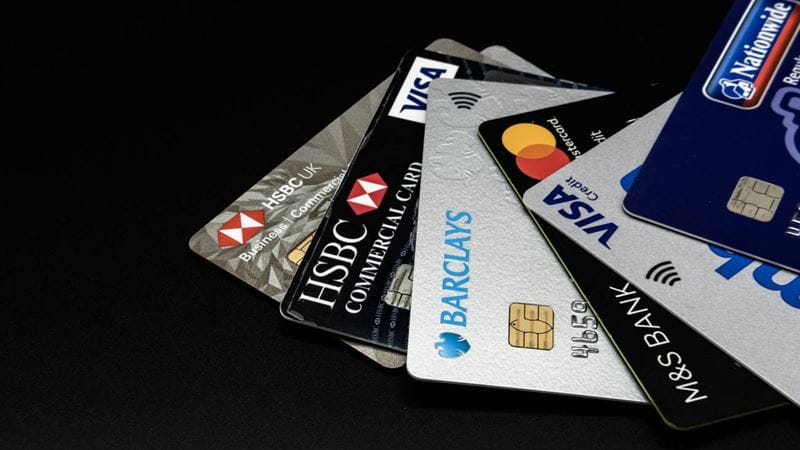


This article is for general guidance only and is not financial or professional advice. Any links are for your own information, and do not constitute any form of recommendation by Saga. You should not solely rely on this information to make any decisions, and consider seeking independent professional advice. All figures and information in this article are correct at the time of publishing, but laws, entitlements, tax treatments and allowances may change in the future.
Banks are battling for your business with cash incentives of up to £175, plus interest rates as high as 5% on balances. With a guaranteed hassle-free switch process, there's never been a better time to move your money.
But if you’ve banked with the same provider for decades, the thought of switching your current account might feel daunting. You’re not alone. Only 10% of over-55s would consider switching their account and just 3% over the age of 65, according to market research firm Mintel.
You may not realise that the switching process is much easier than it used to be – so it's worth checking out your options. Here's everything you need to know about switching your current account.
Rachel Springall, finance expert at Moneyfactscompare.co.uk, says a free cash boost could make a big difference if you’re looking to maximise your budget. “However, it’s important not to be swayed by a perk alone and choose an account that suits your everyday needs,” she adds. Banks are currently offering up to £175 in cash to attract new customers, along with interest rates of up to 5% on cash balances.
“Staying loyal to your current account provider for decades doesn’t pay these days, and these offers don’t always stick around for too long,” says Springall. “Those looking for enticing perks will find some free upfront cash along with other benefits such as cashback on spending, high credit interest or a competitive overdraft appealing.”
Beyond the immediate cash incentive, switching your current account could improve your finances in other ways, such as better rates of interest. Some banks pay up to 5% interest on balances up to a certain amount, or offer linked savings accounts paying up to 7%. On a balance of £1,500, moving from a 0% to a 5% interest current account could earn you £75 in interest a year.
Or if you pay £300 a month into a 7% linked regular saver, you could earn around £135 in interest in a year. Or if you put £4,000 into a linked 6% savings account, you could earn around £240 a year in interest.
When looking at apparently attractive interest rates, don't forget to consider other factors, including how much money you tend to keep in your current account (it may be better off elsewhere) whether you pay tax on savings interest (the personal savings allowance is £1,000 in interest, or £500 for higher-rate taxpayers), as other options such as an ISA might be better for you.
Some banks also offer cashback or rewards, usually at specific retailers, when you pay with your debit card. These offers can change, but are worth checking out before you make a decision about your switch.
t’s worth considering other aspects of banking that matter to you, such as customer service ratings and branch access. Branch access is an important factor for many people, so if that includes you, you might want to research branch locations and opening hours before switching.
Or if you prefer to bank online, you could look at whether a bank's website seems easy to use, and if it offers an app for easier mobile banking.
Some banks also offer additional tools and services, such as budgeting tools, spending notifications, or fee-free overseas spending.
Plus, switching isn’t the hassle it used to be. The Current Account Switch Service (CASS) makes switching straightforward and takes just seven working days. Your new bank manages the entire process, transferring your balance, moving regular payments such as direct debits and standing orders, and even closing your old account.
The switching guarantee means your new bank must complete the switch within seven working days, arrange for payments made to your old account to be automatically forwarded, and contact you to let you know how it’s progressing. You’re also guaranteed that any charges faced or missed interest if anything goes wrong are covered.

There are a few mistakes to avoid when you switch accounts, especially failing to check eligibility criteria for the switch incentive. It’s common for the switching incentive to require two or more active direct debits on your old account, which you then switch across.
Some accounts require you to pay in a minimum amount (either as a one-off or regularly), and you’ll usually need to keep the account open for a certain amount of time to get the incentive.
Some current accounts charge a fee, so if that’s the case, consider whether it outweighs the incentive and whether you’ll benefit from the extras included with the fee. Springall adds: “If you occasionally use an overdraft, check whether your new bank will match your current limit and understand their charges. Some banks offer better overdraft terms or interest-free buffers, which you want to look at, if those are needed.”
A key point to remember is that in most cases you must close your old bank account for it to count as a full switch and for you to receive any switching bonus. This is also part of the Current Account Switch Service, because it helps to ensure that payments made to your old account are redirected to your new account. (In theory you can switch without using CASS, but you won’t have the same protection if something goes wrong and you probably won't get any of the switch incentives.) So make sure you select this option when you’re requesting your switch.
Almost all banks offer CASS, but there are a few exceptions. See which banks and building societies are signed up to CASS.
Before you switch, carefully match the account to your needs. So if you’re attracted by a high-interest savings account or cashback, ask yourself whether you’ll truly make use of these perks.
If you have a fixed-term Regular Saver account paying a decent rate of interest that’s linked to your existing account, check the terms and conditions, as you may have to close your Regular Saver if you close your current account. Some banks will give you a much lower rate of interest if you close before the end of the term (which is usually 12 months). If your Regular Saver matures soon, it might be worth waiting until it matures to switch. Or if you’ve only recently opened it, you might be better off switching, especially if you’re switching to a bank that offers a similar or better rate Regular Saver.
These are the most generous switch incentives currently on offer – though be aware they are subject to change.
With the First Direct 1st account, you’ll also usually receive a £250 interest-free overdraft, and fee-free spending abroad. You won’t get any interest on your balance, but you can get a 7% regular saver for a year on savings between £25 and £300 per month.
You’ll need to switch a minimum of two direct debits or standing orders, and deposit at least £1,000 into the account and make five debit card payments within 45 days.
Eligibility: You won’t be entitled to this offer if you’ve ever had any First Direct account or mortgage, or an HSBC current account since 1 January 2018.
To get the incentive, you’ll need to switch at least two direct debits, and deposit at least £1,000 into the account. If you switch to the FlexDirect account, this pays 5% AER interest on balances up to £1,500 for a year, alongside 1% cashback for 12 months up to a maximum of £5 a month.
Eligibility: You won’t be eligible for the offer if you’ve switched to Nationwide since 18th August 2021. You can still get the £175 cash bonus if you already have a Nationwide current account and you switch an account with another provider to Nationwide.
Santander is paying £150 to customers who move to its Everyday, Edge, Edge Up or Private bank account. The Everyday account is free to hold but doesn’t pay any cashback or interest. Or the Edge current account comes with a £3 monthly fee, and pays 1% cashback with the grocery and transport costs and household bills (capped at £10 per month), with access to a 6% AER savings account on up to £4,000.
Or you could pay a £5 monthly fee for the Edge Up current account, in which case you can earn up to £15 a month on essential spending and household bills, and 3.5% interest on balances up to £25,000.
You’ll need to switch two direct debits and to pay in at least £1,500 within 60 days of switching.
Eligibility: Available to both new customers and existing customers, as long as you move your account from another provider. You won’t receive the cash if you’ve already received a cash incentive to switch to a Santander current account since September 2021.
A: All direct debits and standing orders are automatically moved to your new account. Your new bank will share your new account details with all regular payment providers. If you have a credit card, mortgage or additional joint account with the same bank as your old account, any regular payments from your old current account to those will be moved across in just the same way.
A: Yes, but you'll need to agree any overdraft facilities with your new bank before switching. Some banks will match your existing overdraft limit.
A: Yes. Both account holders must agree to the switch and meet the new bank's eligibility criteria.
While switching itself won't affect your credit score, applying for an overdraft with your new account is likely to trigger a “hard” credit check. A large number of hard credit checks in a short period of time can affect your credit score for six months, which could reduce your ability to get approved for credit. Some banks may do a “soft” credit check to check your identity even if you don’t apply for an overdraft, but this won’t affect your credit score.
A: You can request statements from your old bank if you want to keep them.
A: You have a 14-day cooling-off period after initiating the switch during which you can cancel it, as long as it’s at least seven days before the switch date. If it’s less than seven days to the switch, some parts of the switch can’t be cancelled. If you decide you don’t like your new bank, there’s nothing to stop you from switching to another bank (although if you still want to get the switch incentive, check the eligibility criteria including how long you need to keep the new account open for).
A: The Current Account Switch Guarantee protects you if anything goes wrong during your switch. If any payments are missed or delayed causing fees or lost interest, your new bank must refund these charges and put you back in the position you would have been in had the switch gone smoothly. They'll also contact any companies that try to pay money into your old account for the next 36 months.






From filing your tax return to returning unwanted gifts, find out how to get 2025 started on the right track.